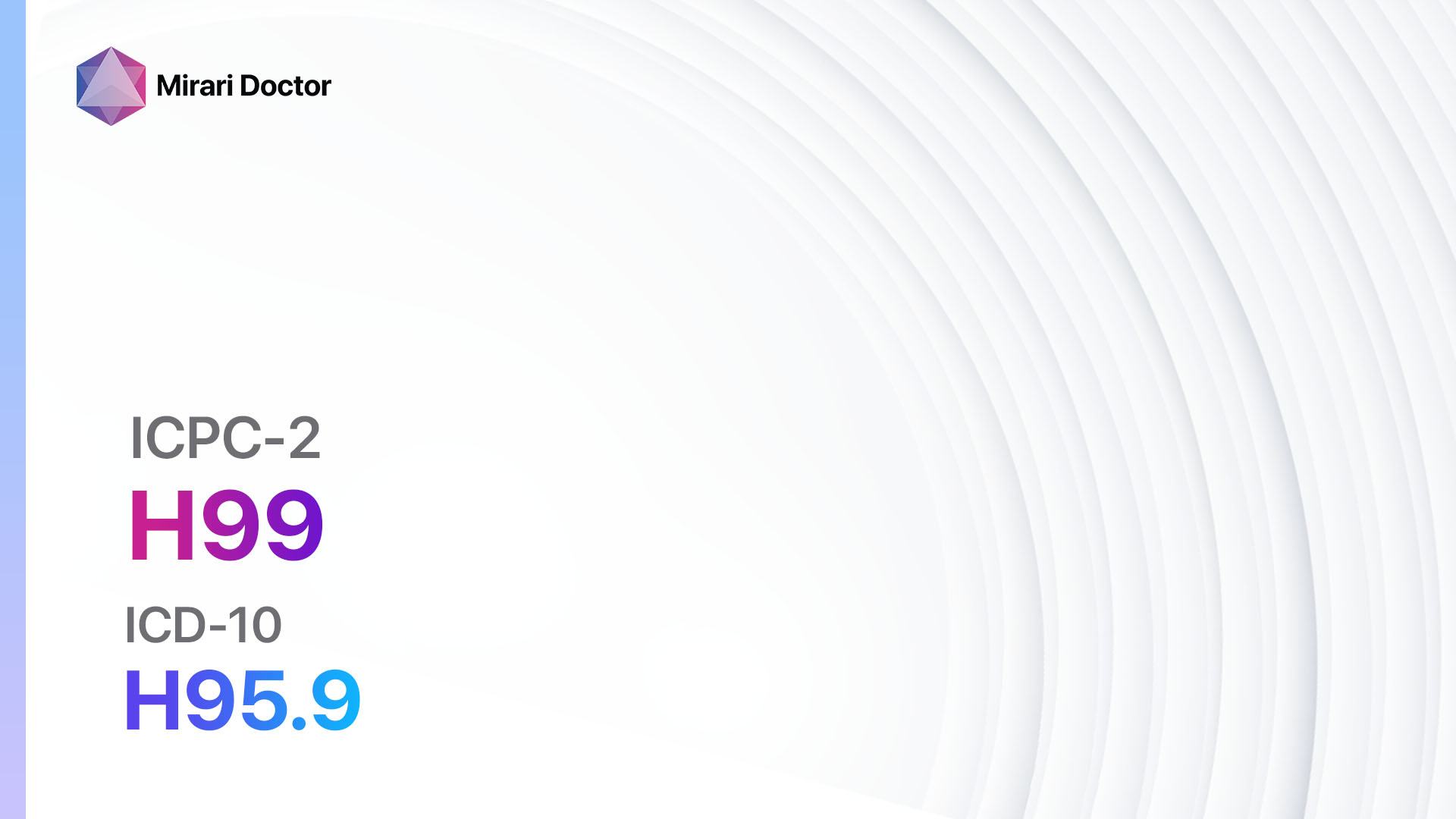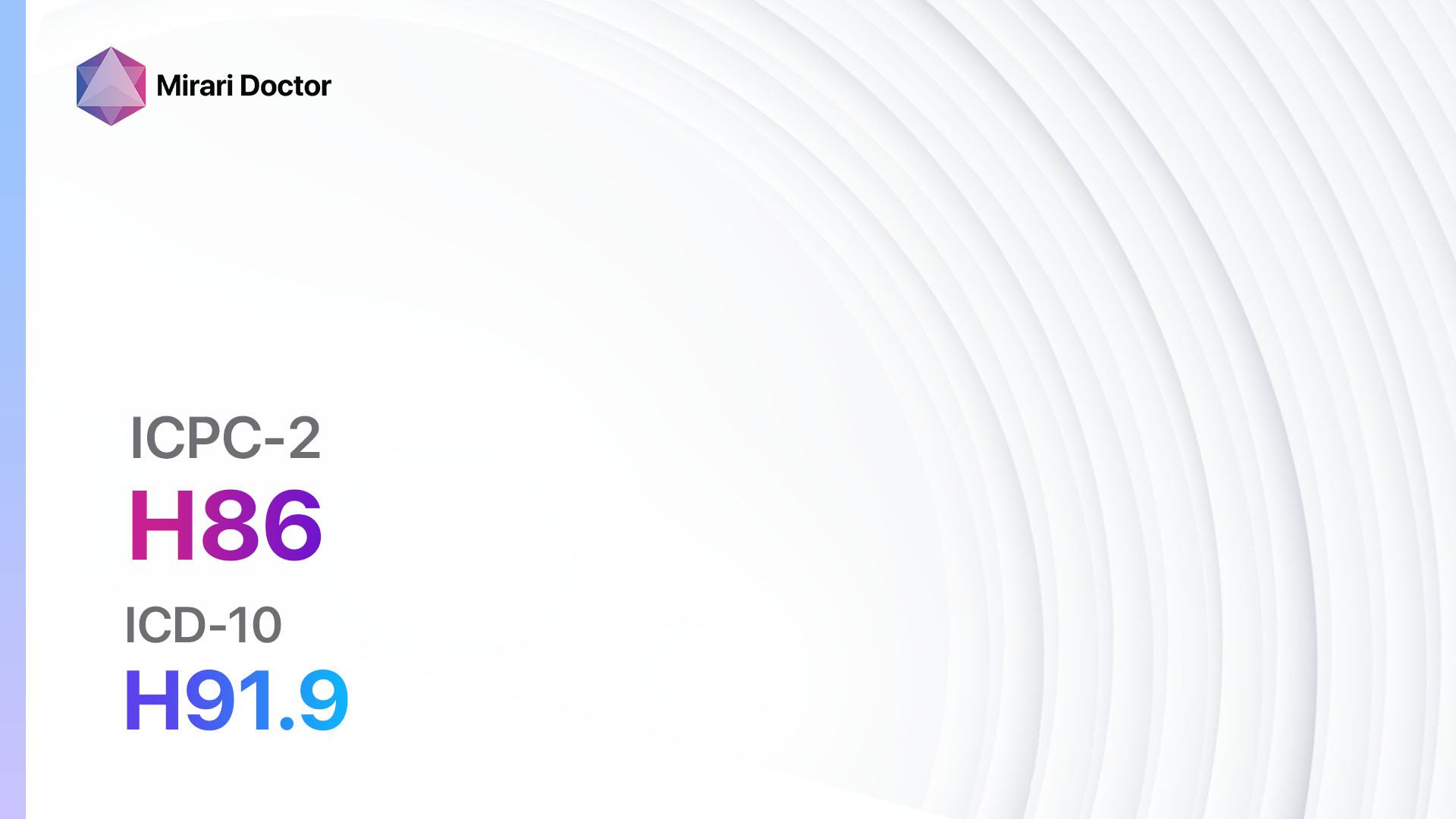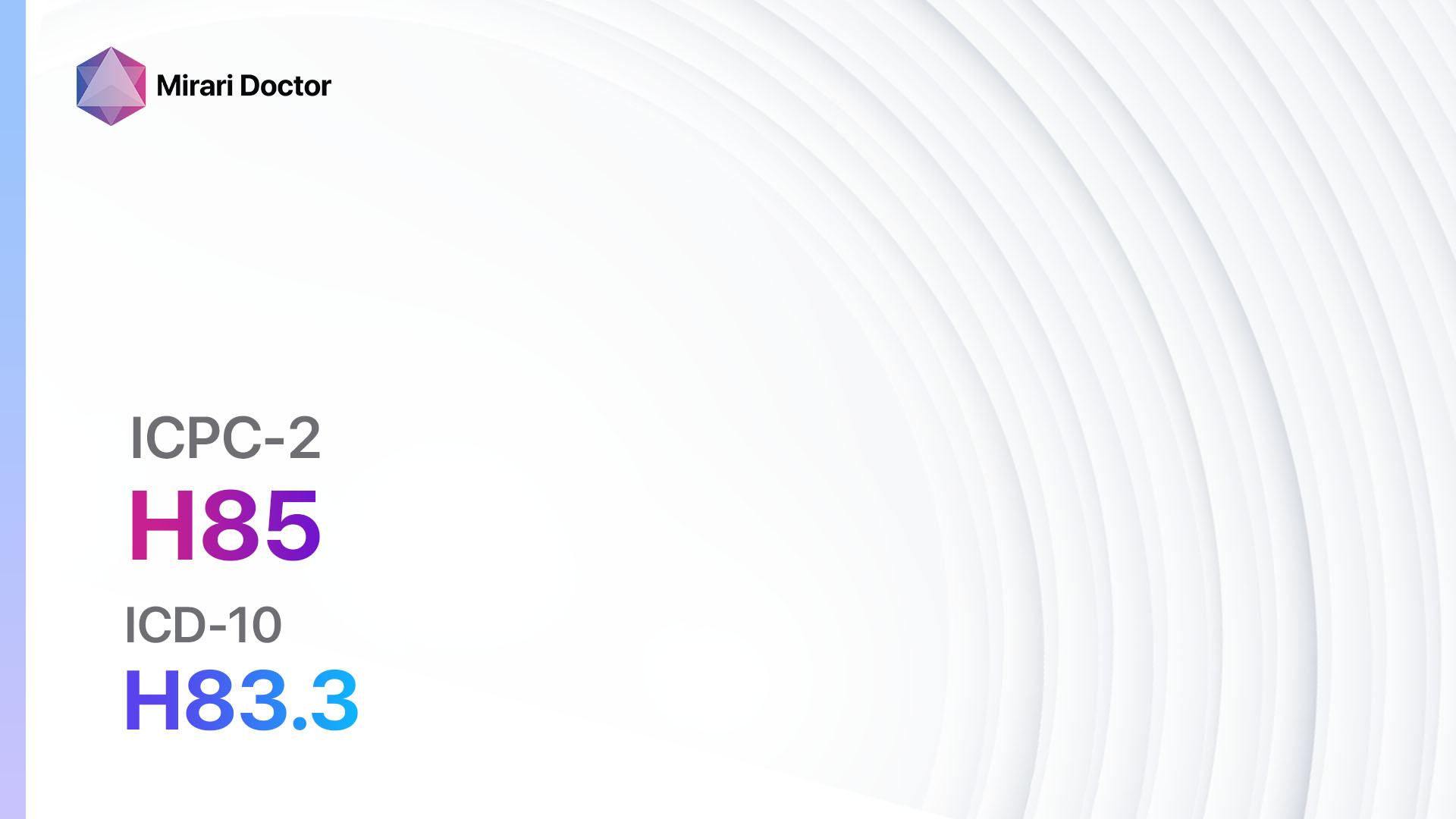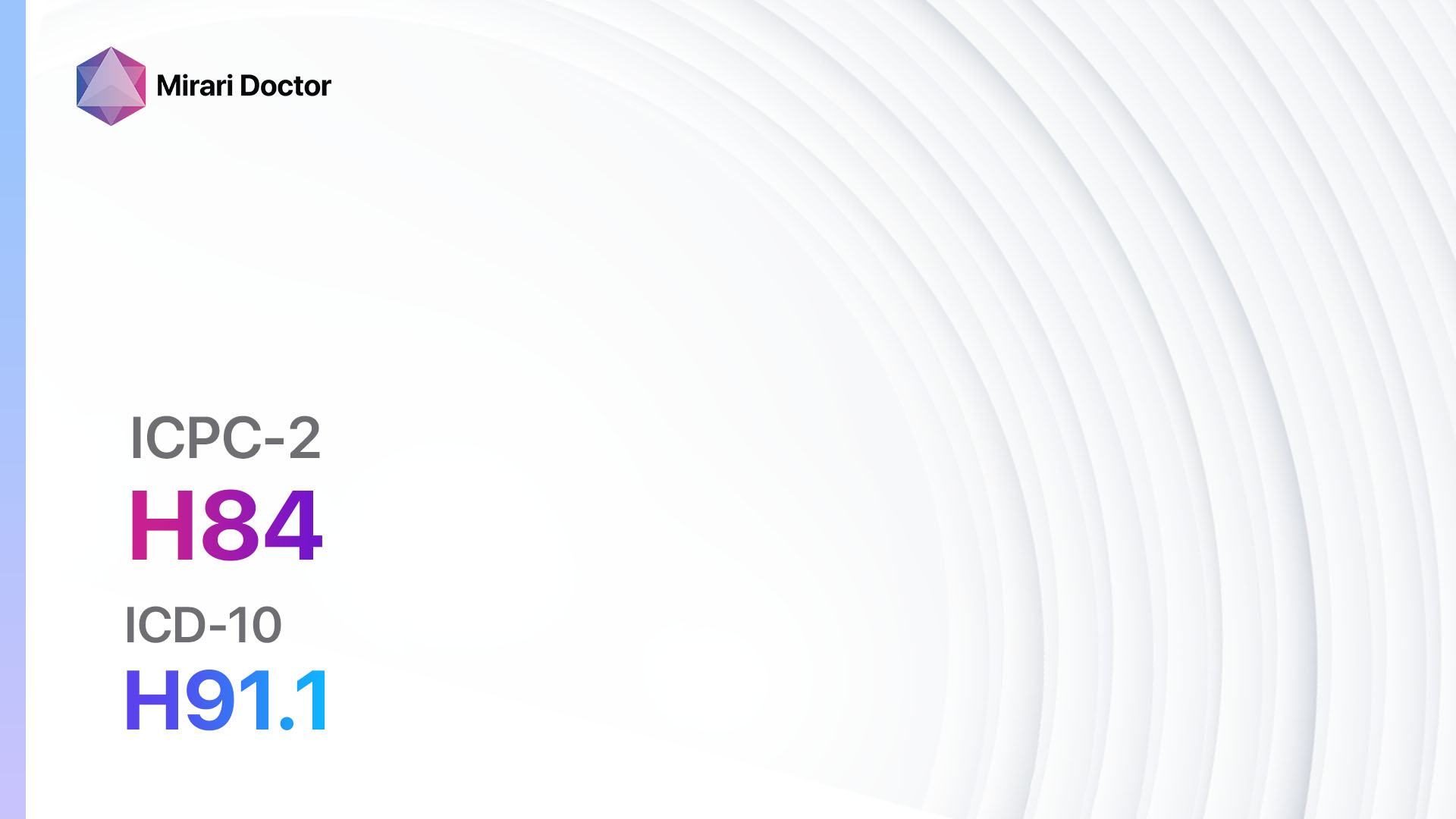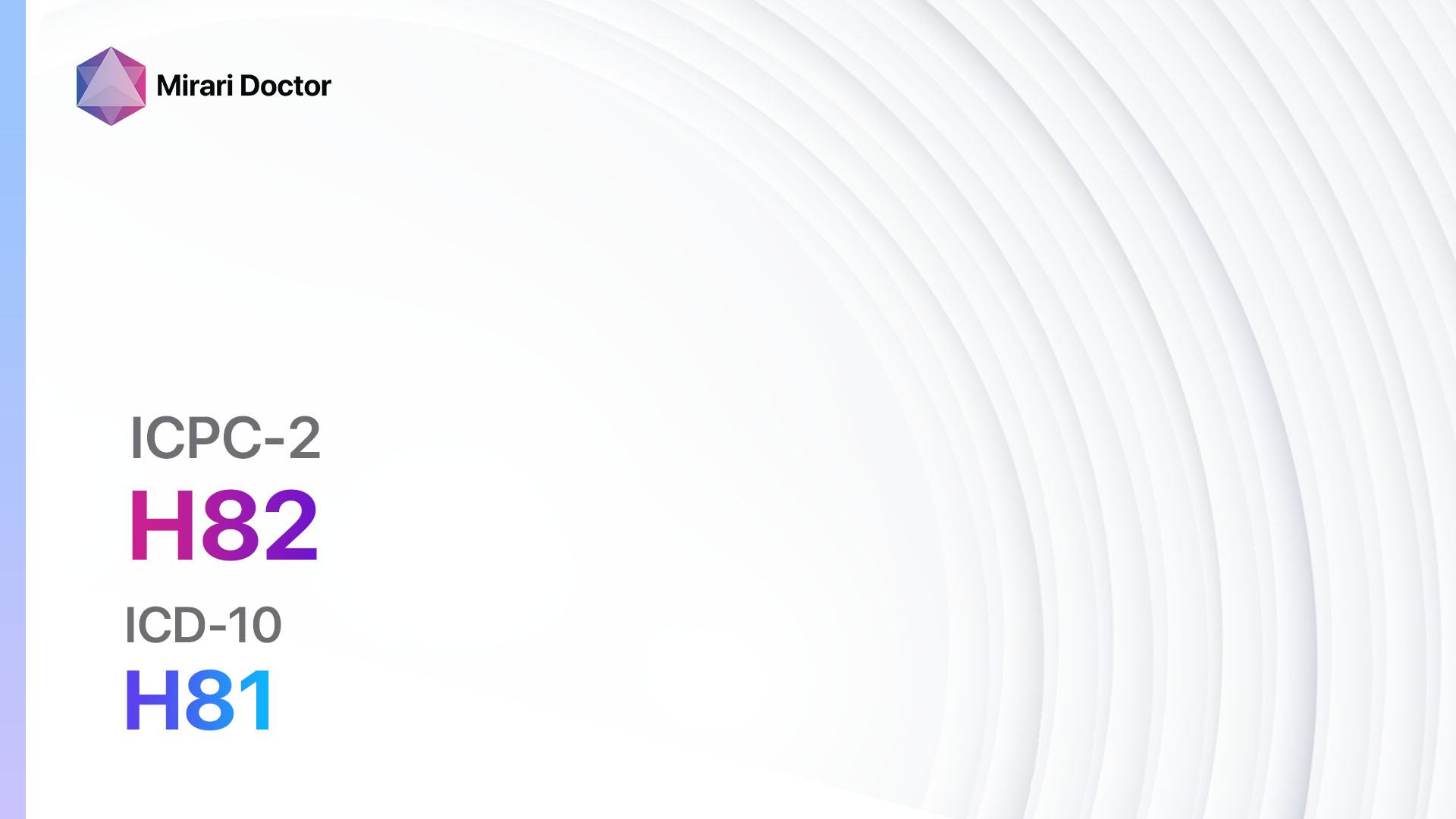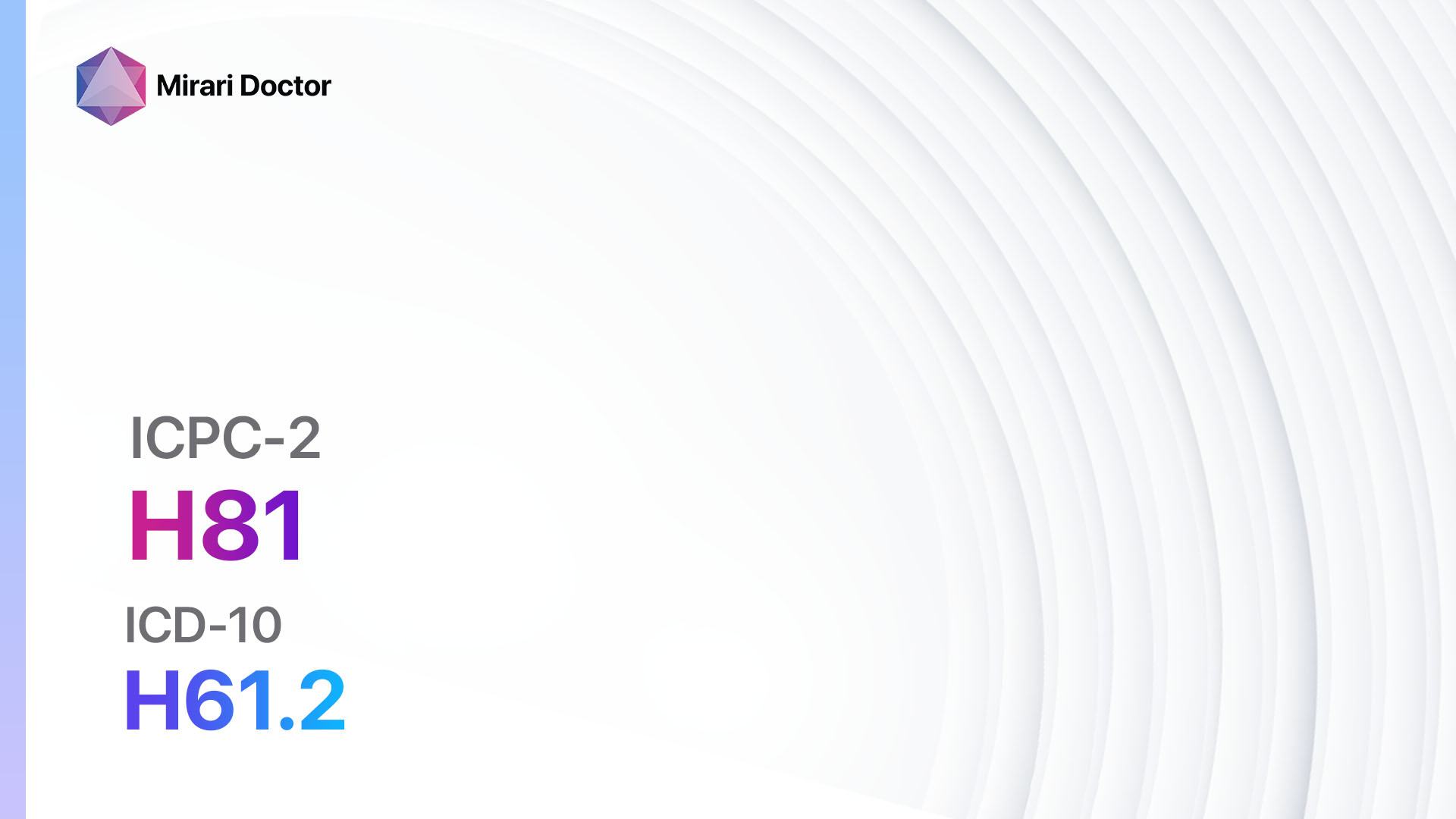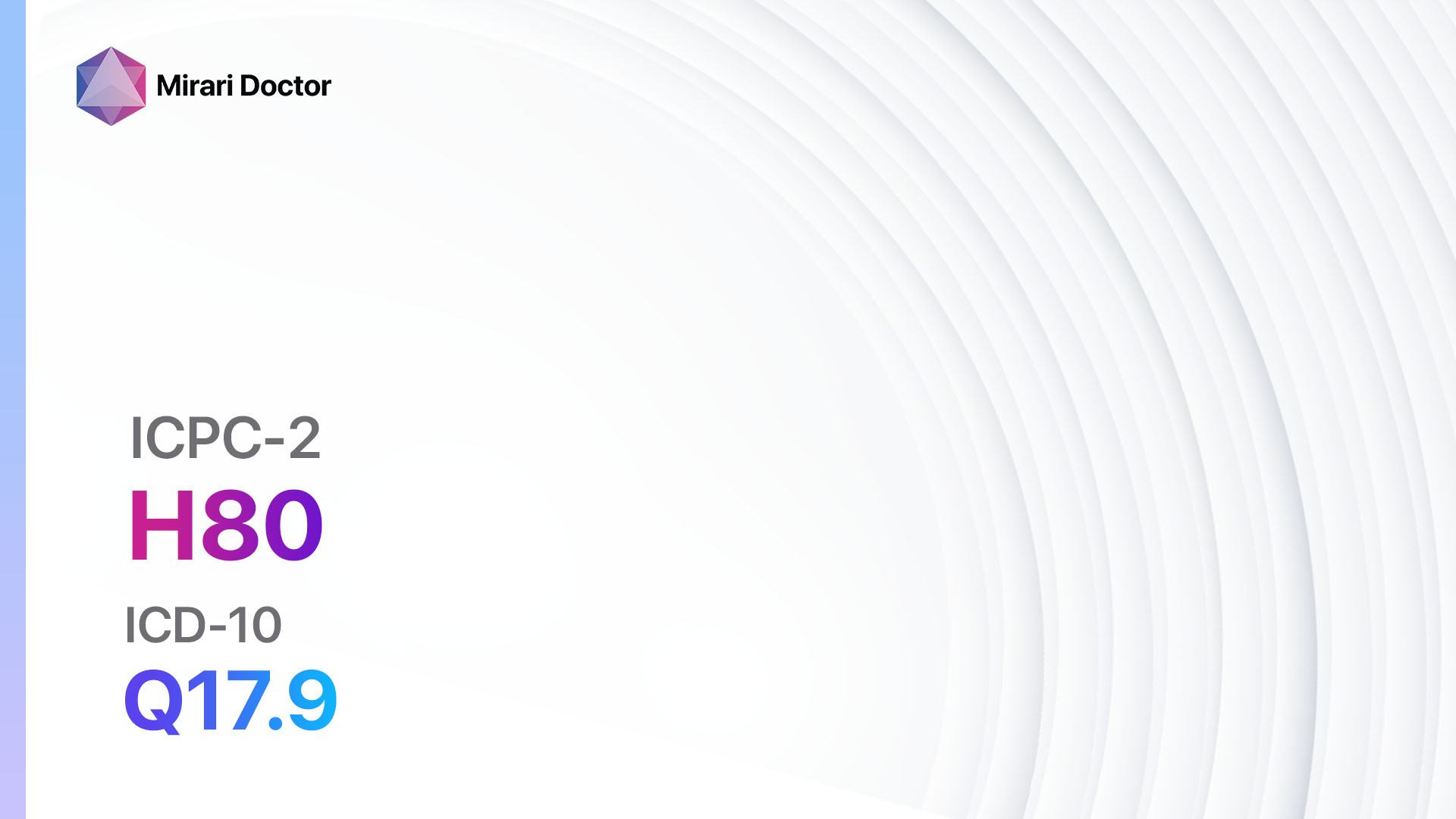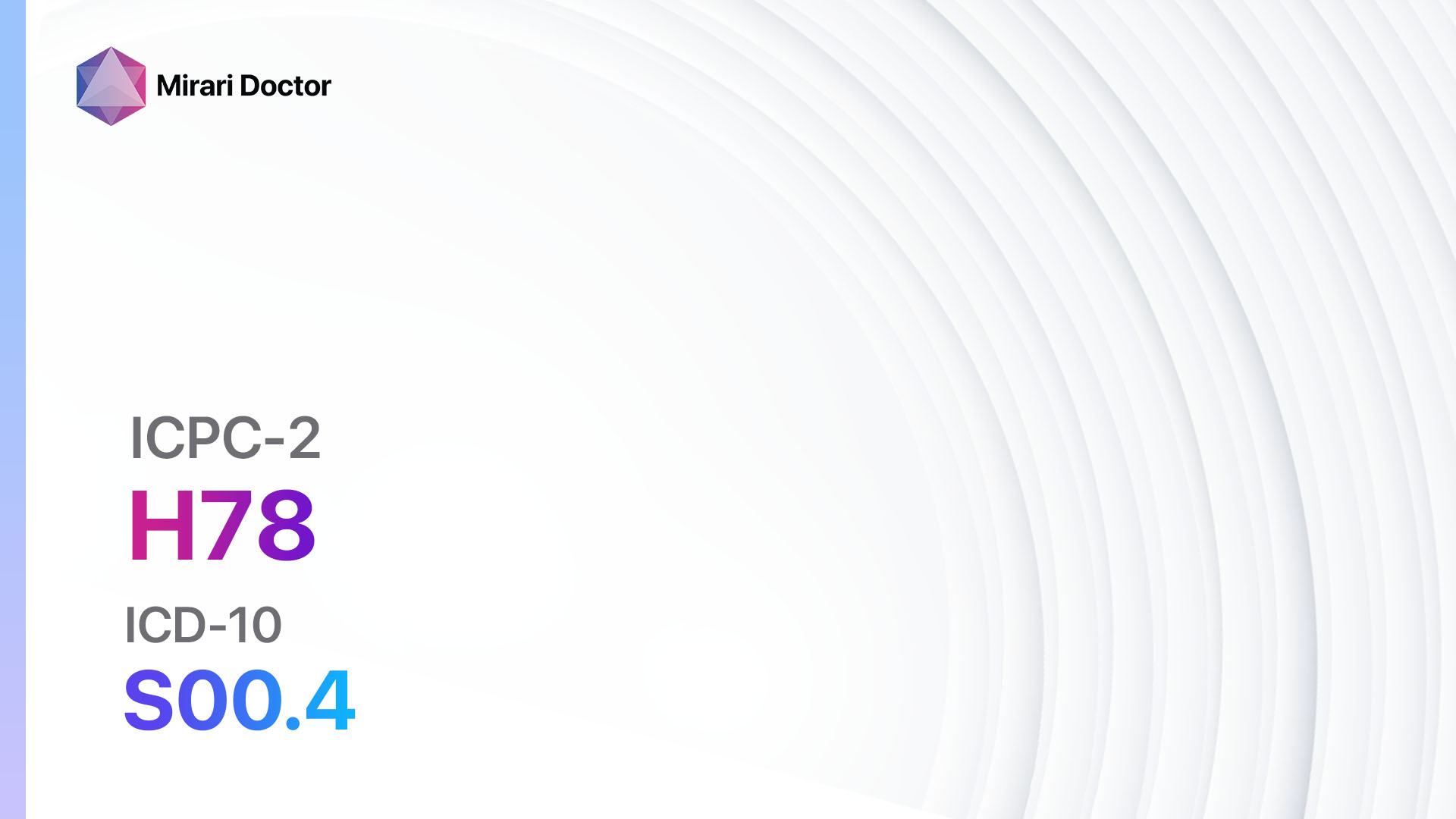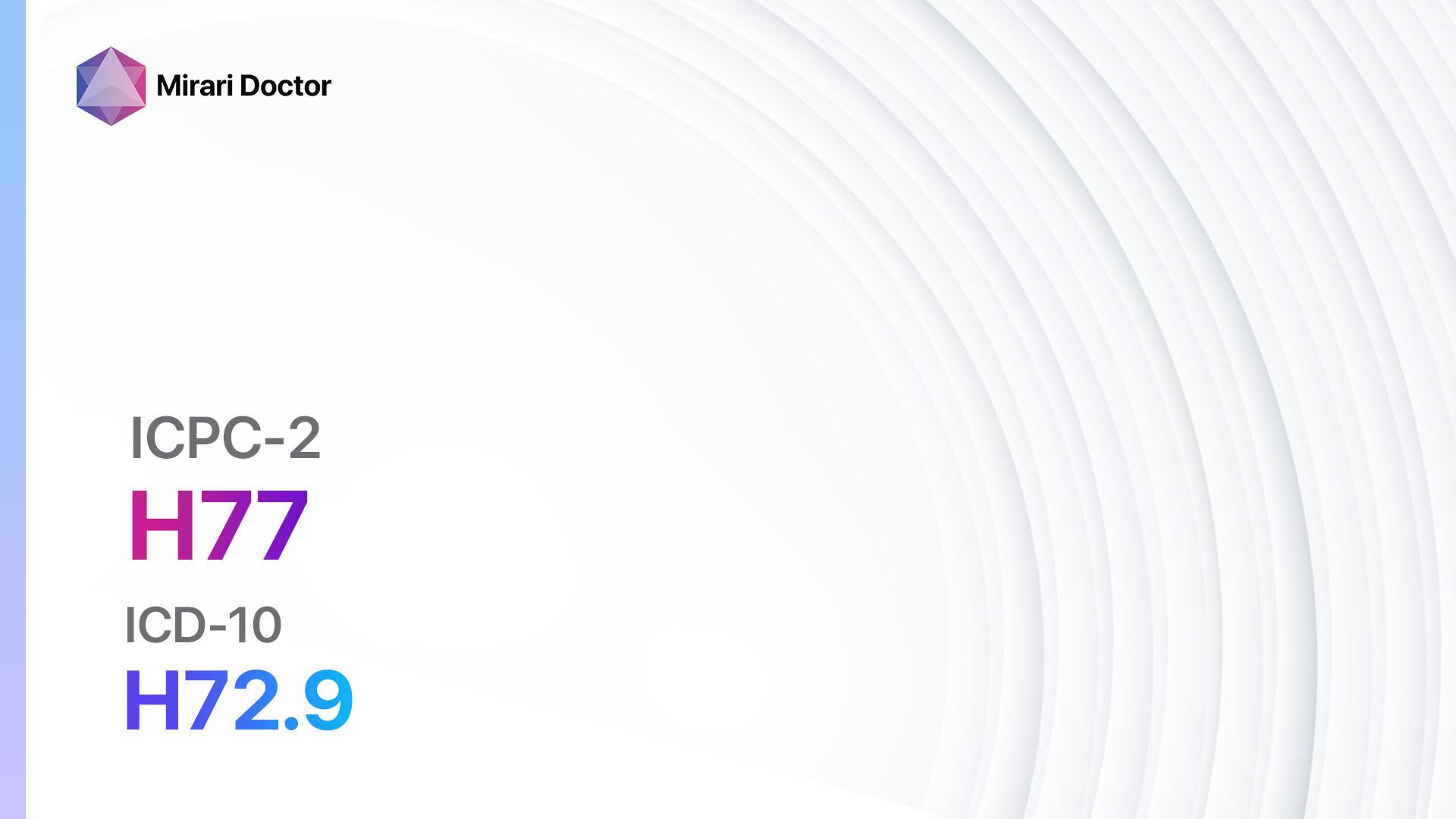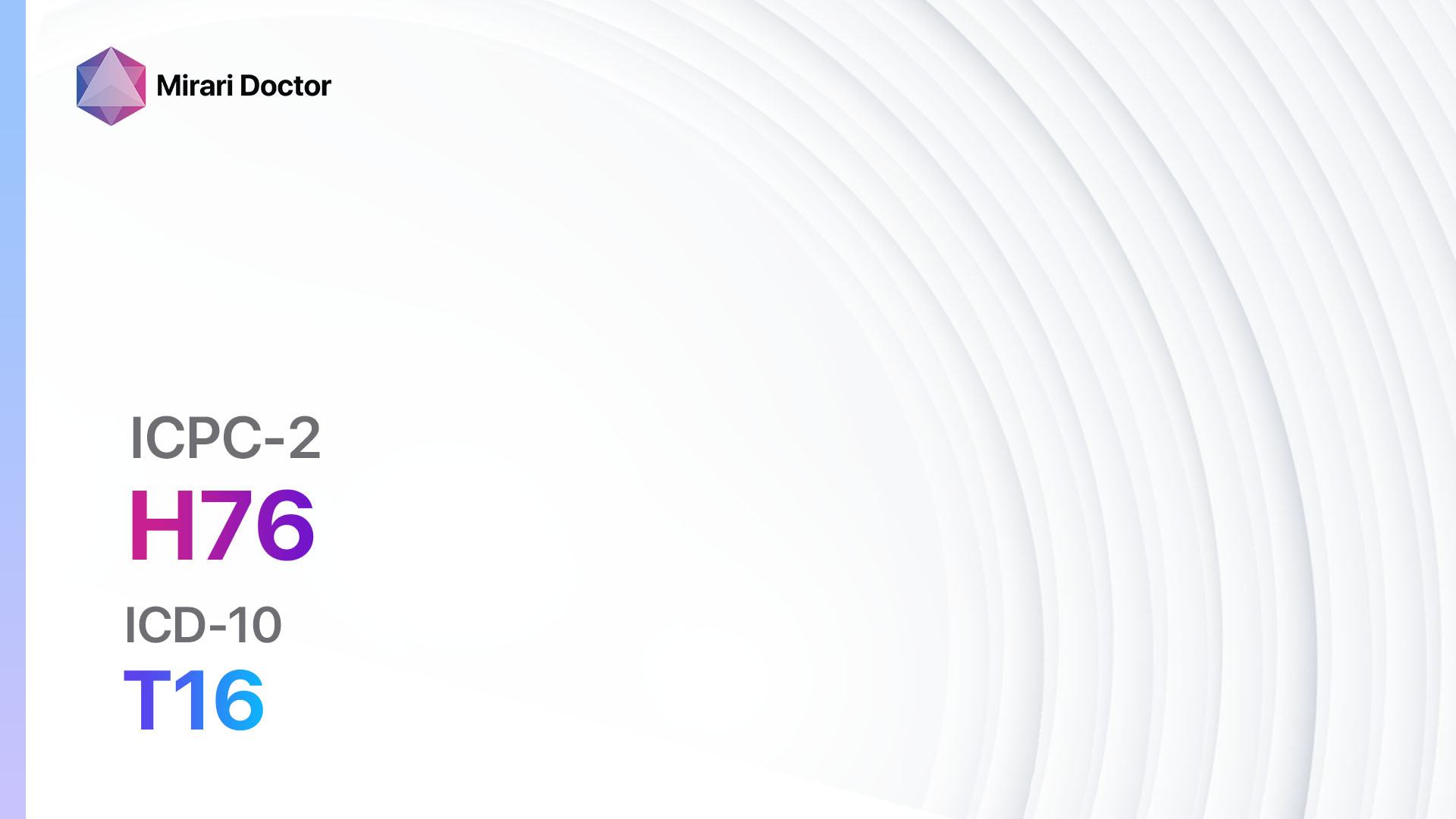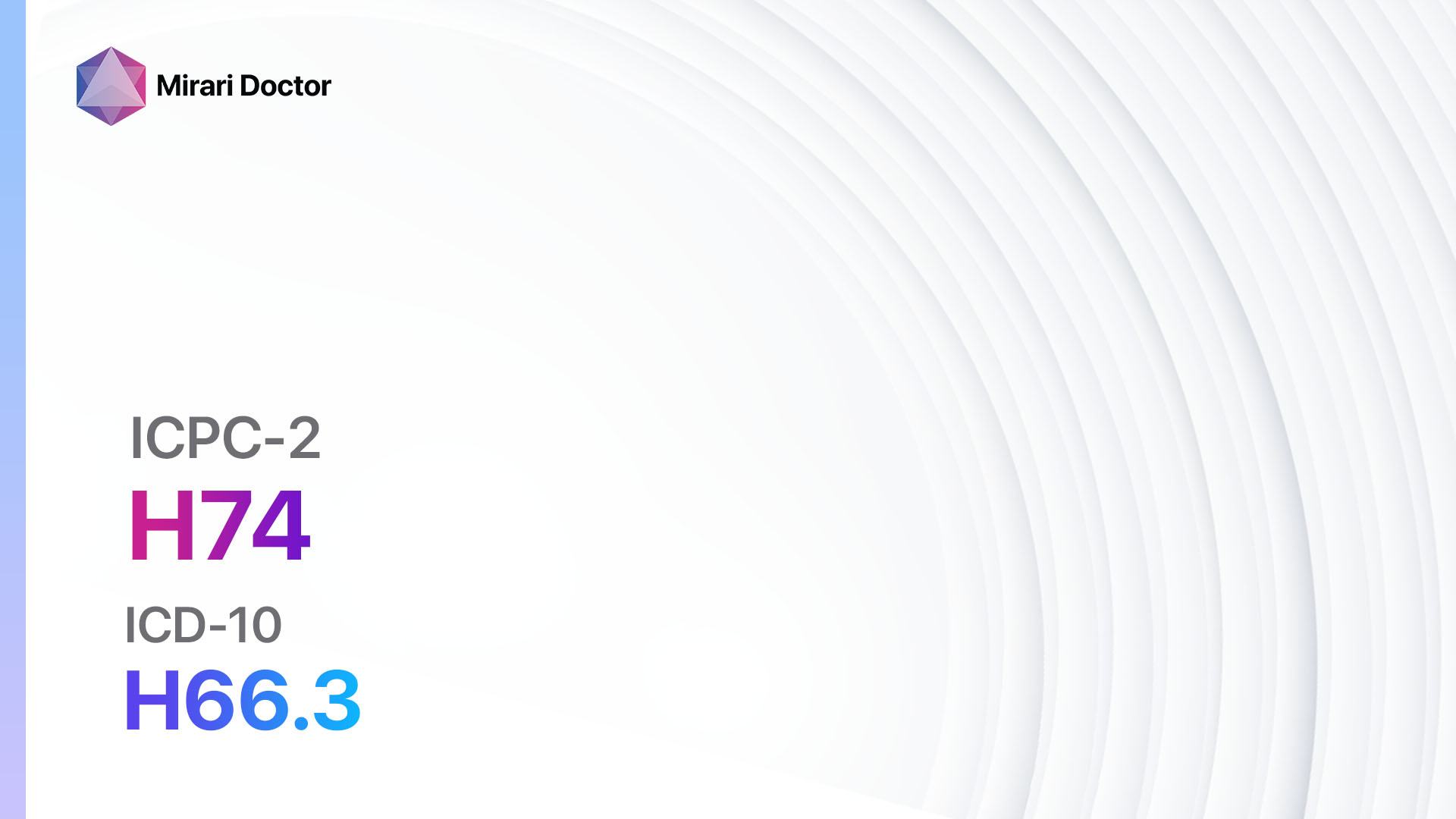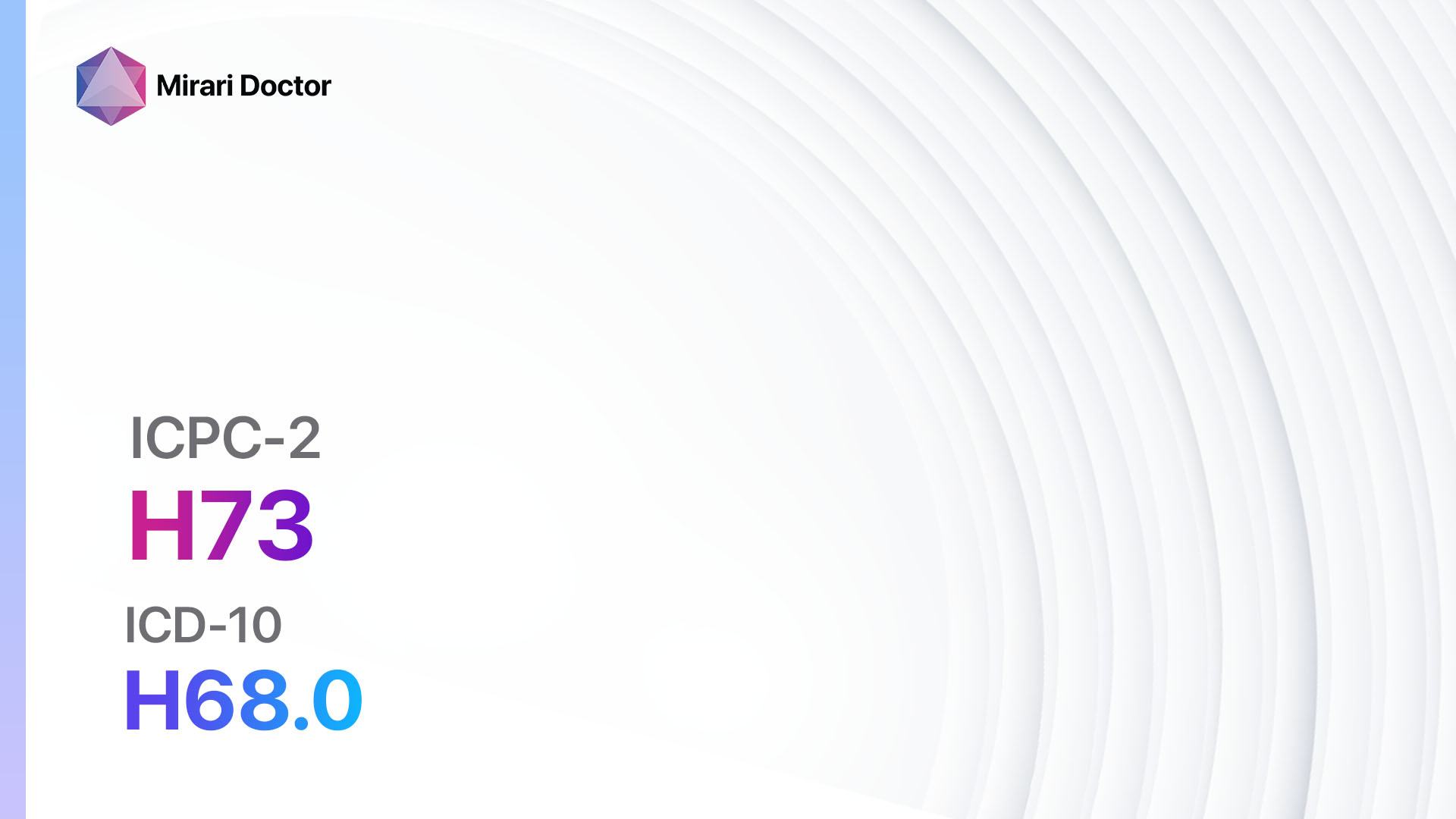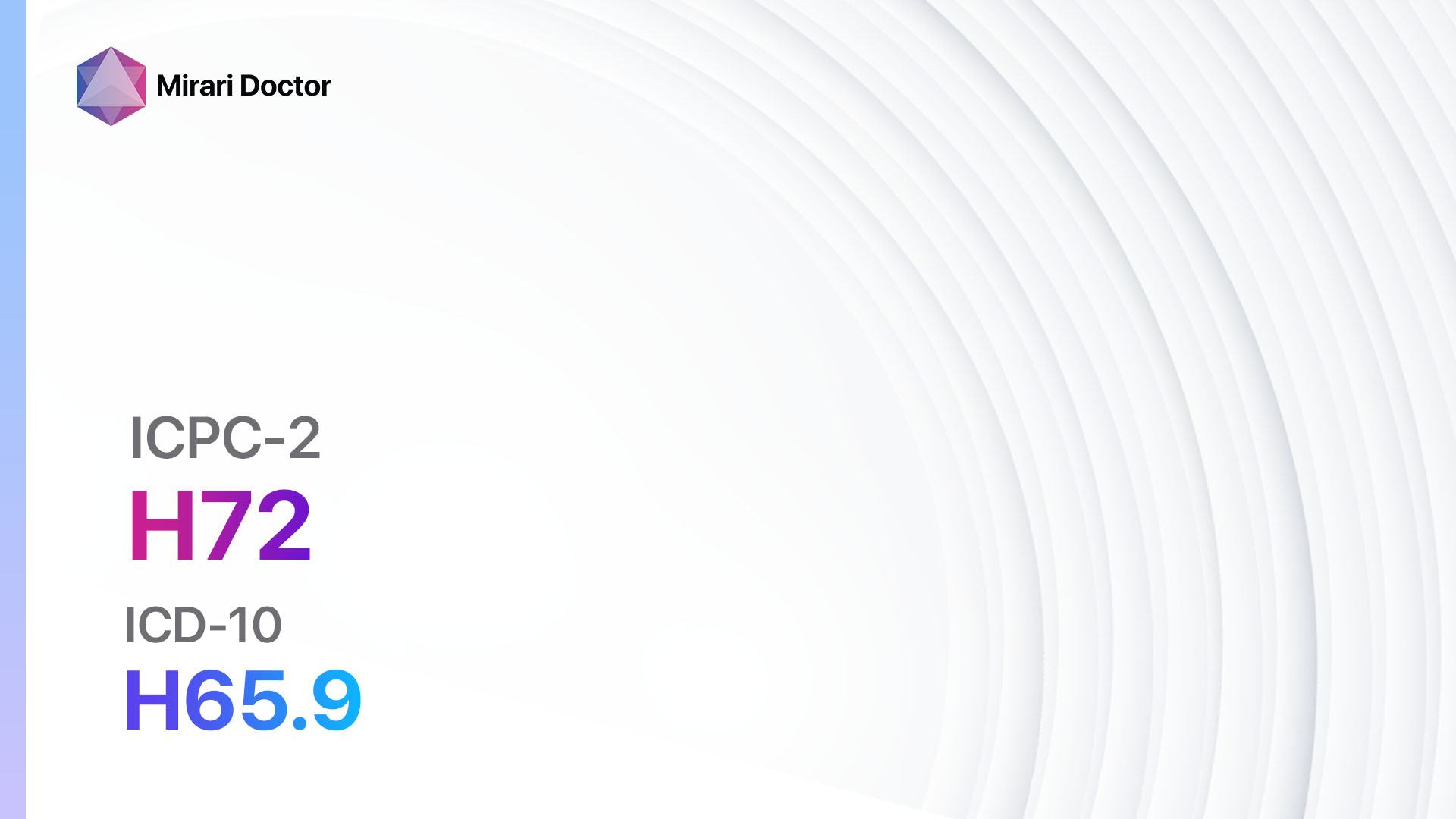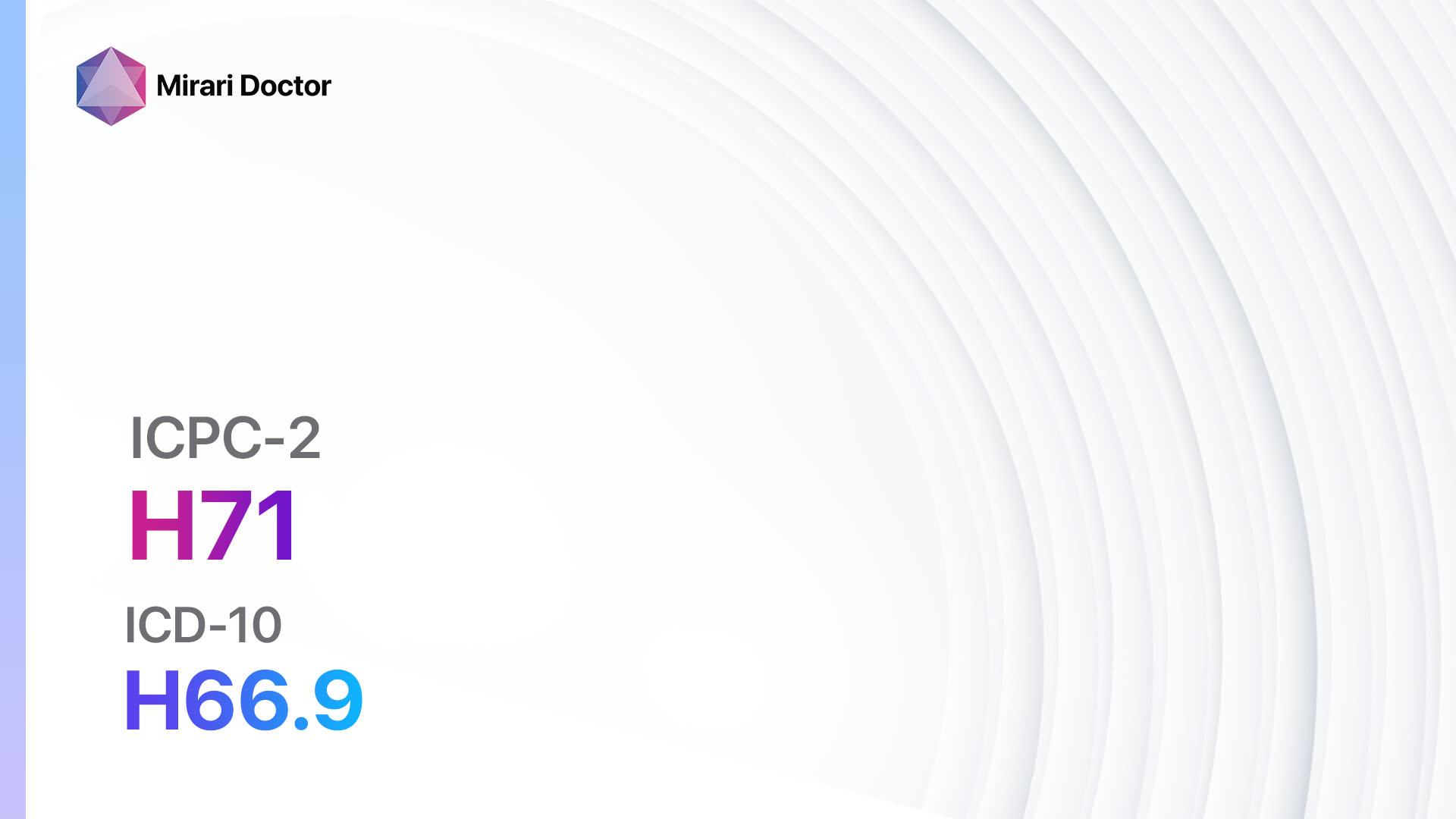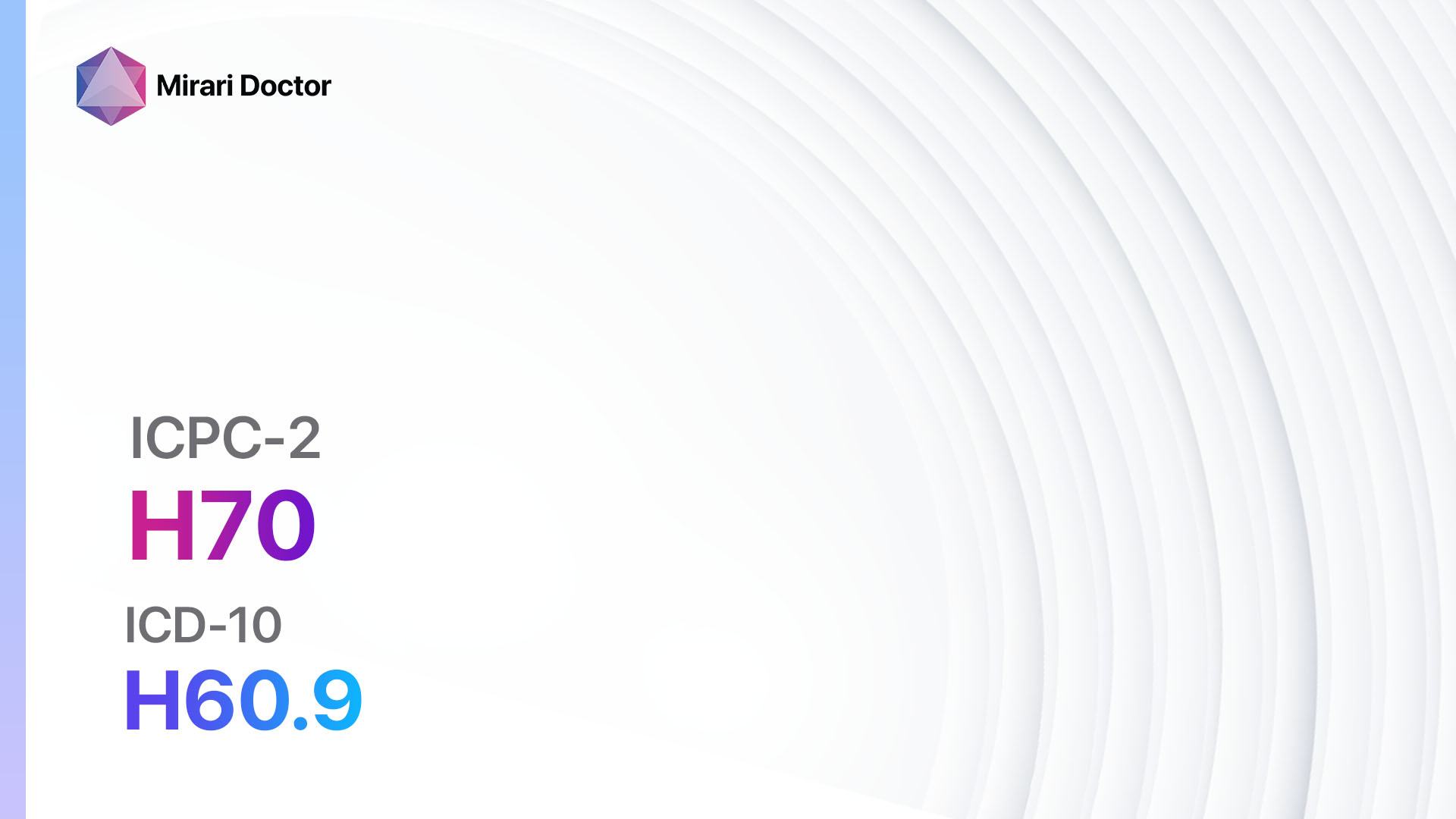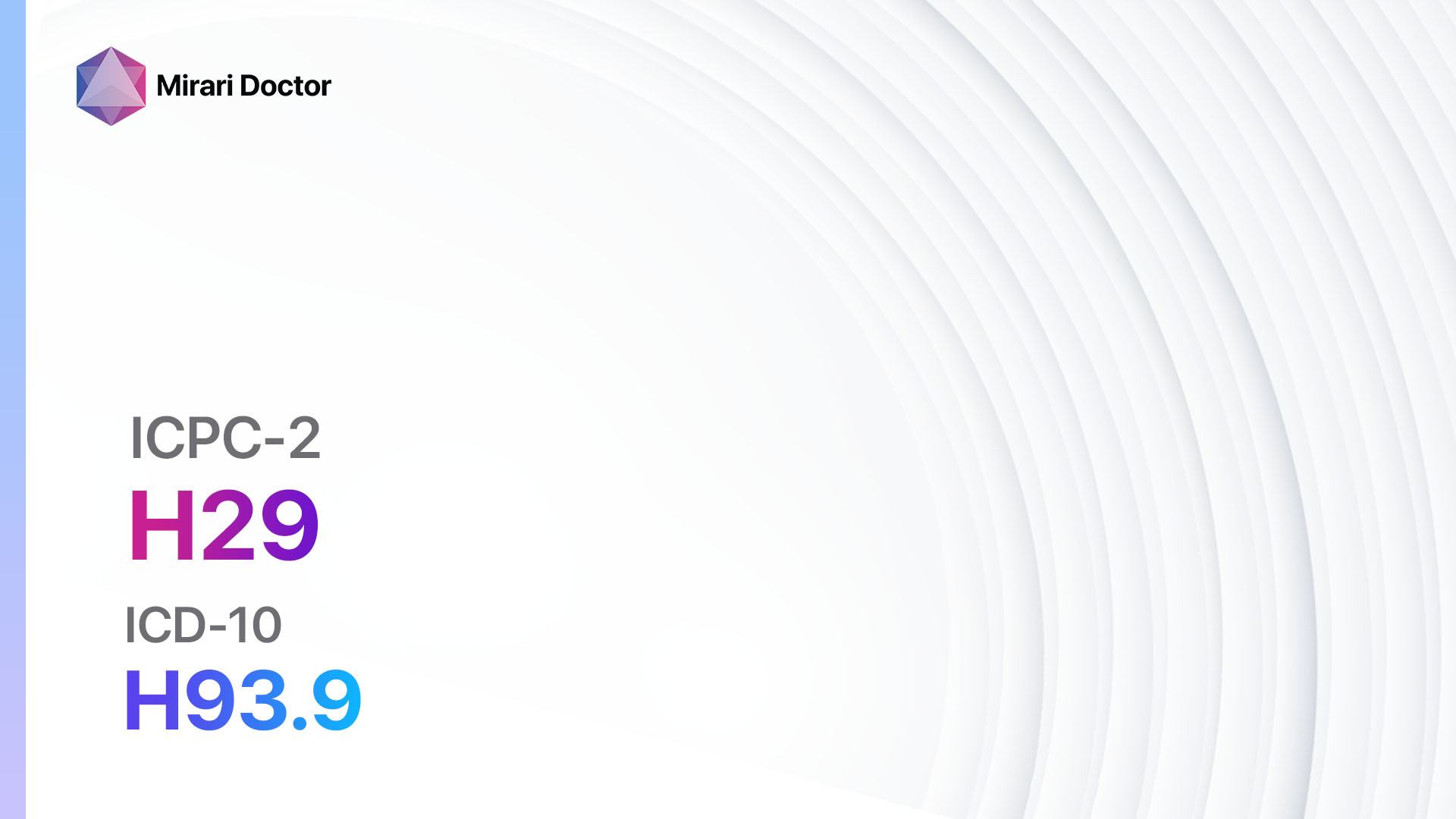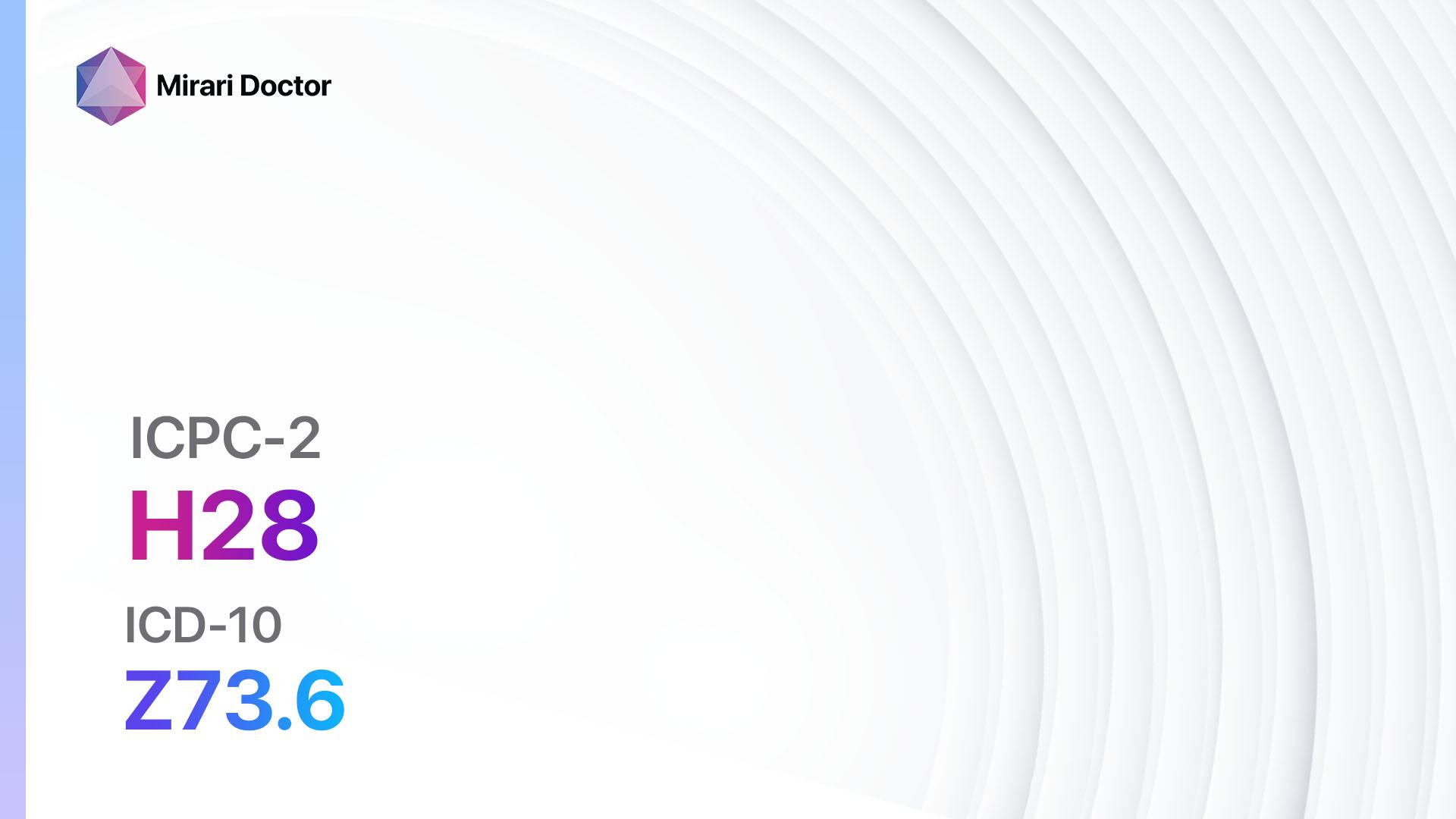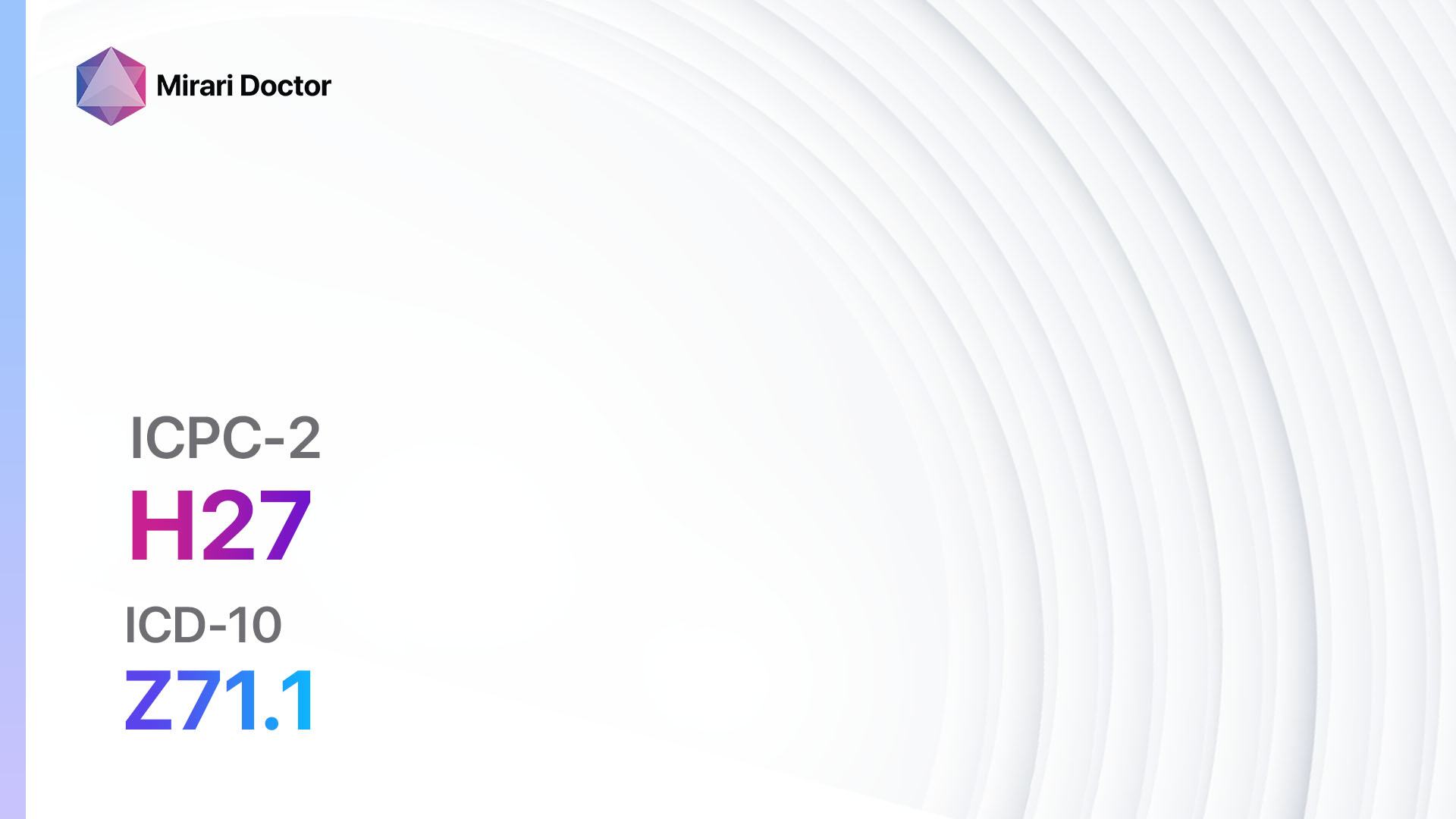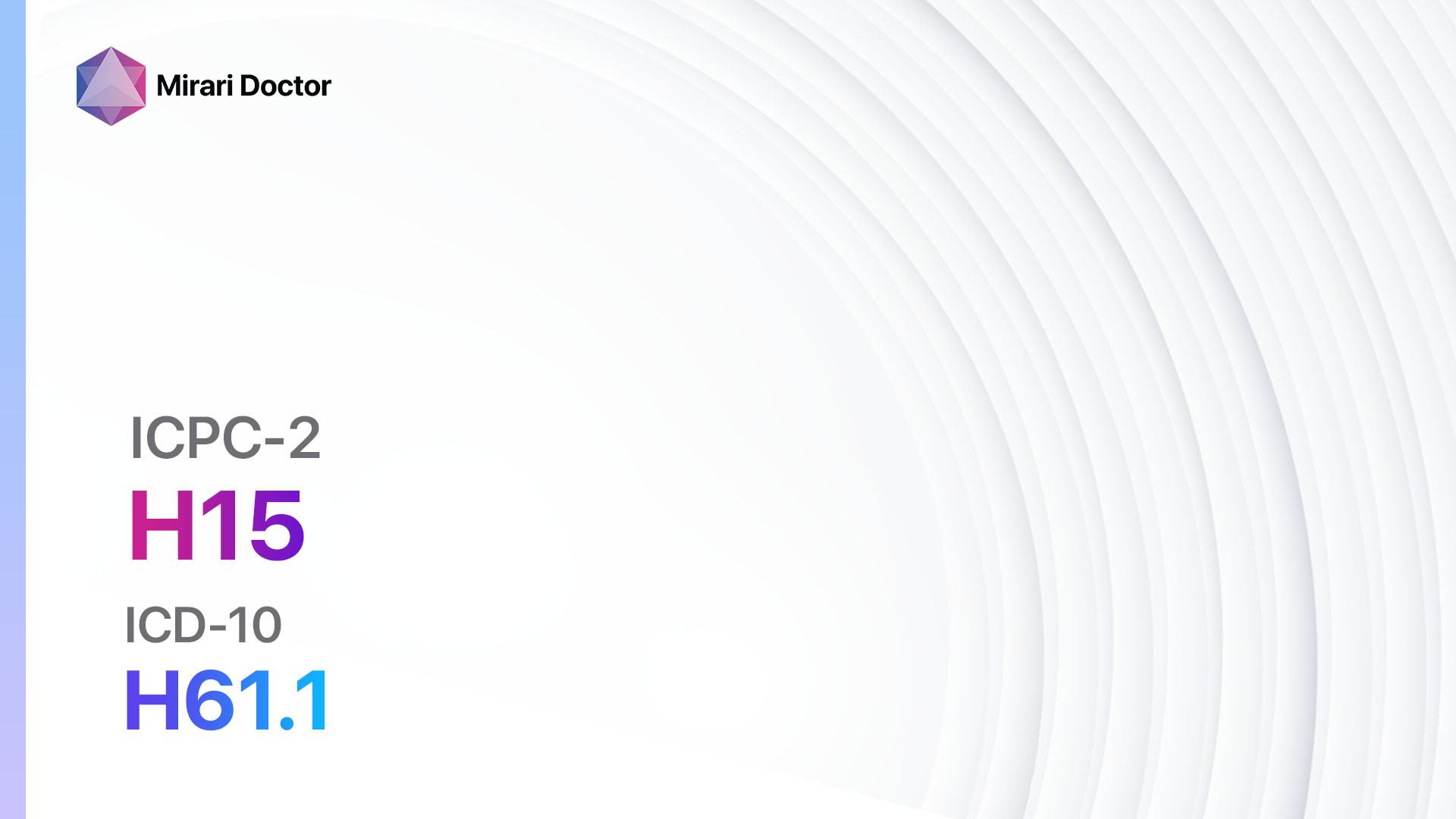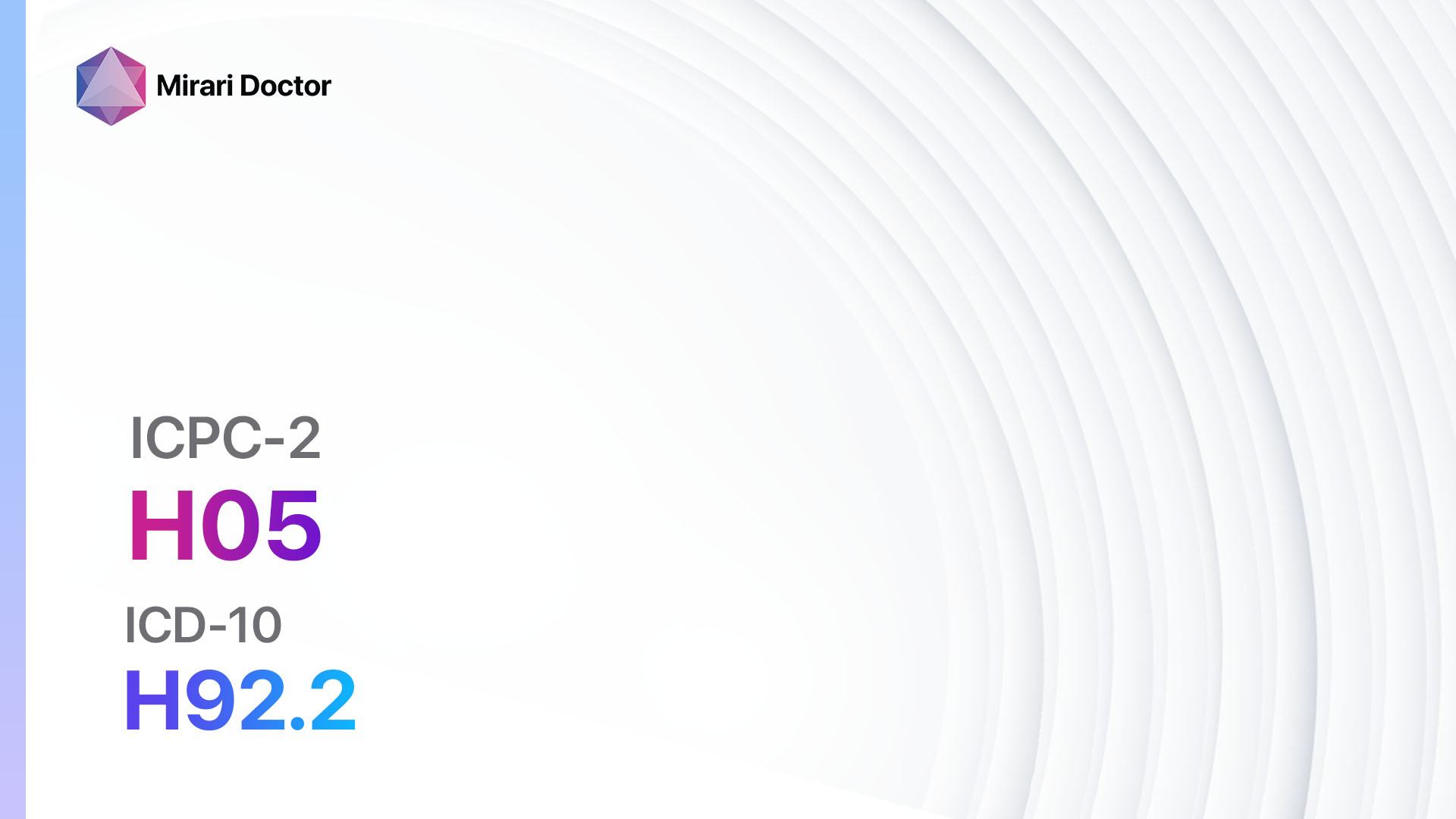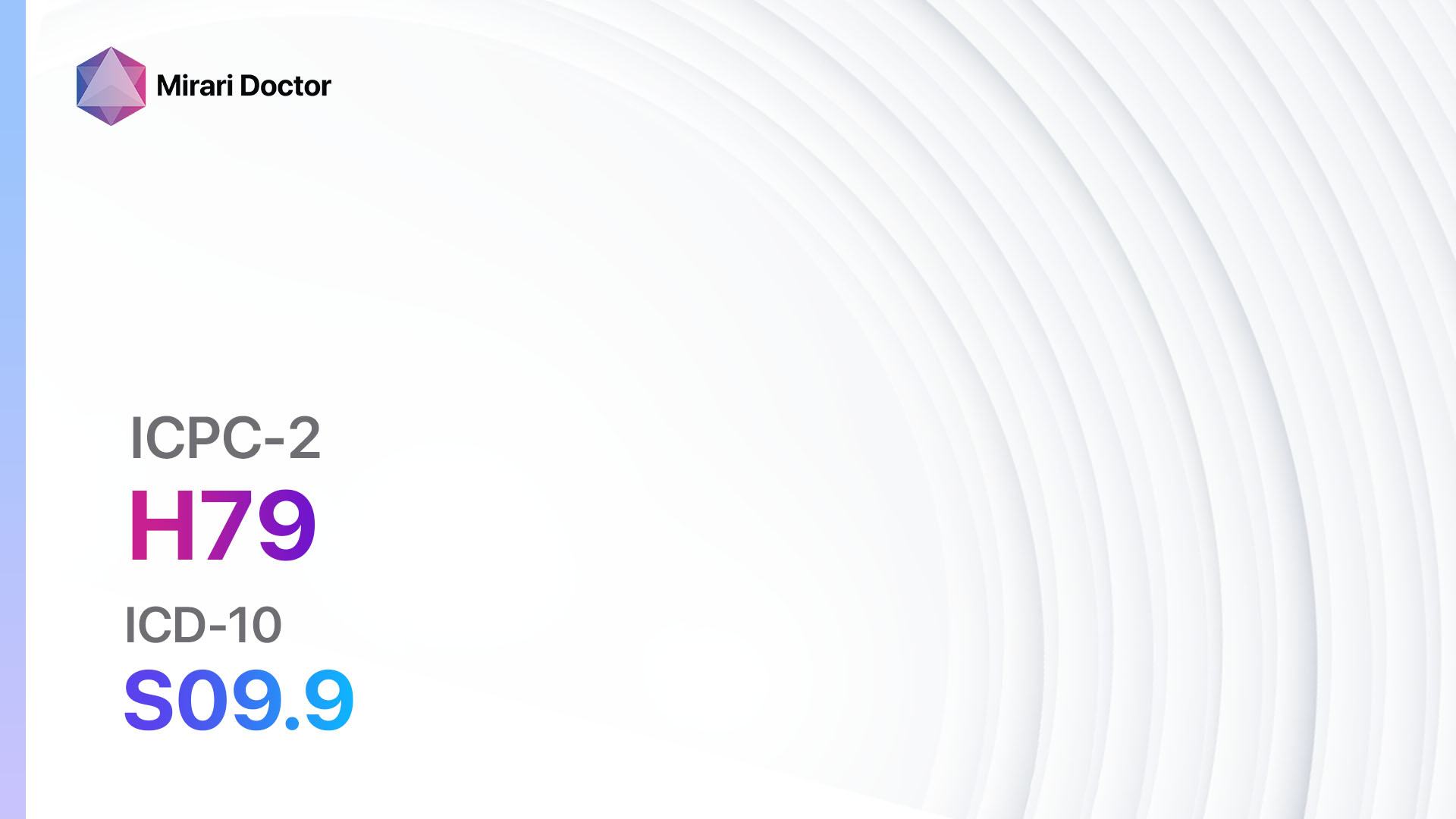
Introduction
Ear injuries can occur due to various causes, such as trauma, infection, or exposure to loud noises[1]. These injuries can result in symptoms like pain, hearing loss, or discharge from the ear[2]. This guide aims to provide a comprehensive overview of the diagnostic steps, possible interventions, and lifestyle modifications for ear injuries.
Codes
Symptoms
- Pain in the ear: Patients may experience sharp or dull pain in the affected ear[5].
- Hearing loss: Ear injuries can lead to temporary or permanent hearing loss[6].
- Discharge from the ear: In some cases, there may be a discharge of fluid or blood from the ear[7].
- Tinnitus: Patients may experience ringing or buzzing sounds in the ear[8].
- Vertigo: Ear injuries can cause dizziness or a spinning sensation[9].
Causes
- Trauma: Injuries to the ear can occur due to direct blows, falls, or accidents[10].
- Infection: Bacterial or viral infections can lead to ear injuries.
- Barotrauma: Sudden changes in pressure, such as during air travel or scuba diving, can cause ear injuries.
- Noise exposure: Prolonged exposure to loud noises can damage the ear and result in injuries.
Diagnostic Steps
Medical History
- Gather information about the patient’s symptoms, including the onset, duration, and severity.
- Inquire about any recent trauma, infections, or exposure to loud noises.
- Ask about any previous ear injuries or medical conditions related to the ear.
Physical Examination
- Inspect the external ear for any visible signs of injury, such as swelling, redness, or deformity.
- Examine the ear canal using an otoscope to check for any abnormalities, such as perforation or foreign objects.
- Assess the patient’s hearing using a tuning fork or audiometry tests.
- Evaluate the patient’s balance and coordination to identify any vestibular involvement.
Laboratory Tests
- Complete blood count (CBC): To check for signs of infection or inflammation.
- C-reactive protein (CRP): Elevated levels may indicate an inflammatory response.
- Culture and sensitivity: If there is discharge from the ear, a sample can be collected for bacterial or fungal analysis.
Diagnostic Imaging
- X-ray: Useful for identifying fractures or foreign bodies in the ear.
- CT scan: Provides detailed images of the ear structures, useful for assessing the extent of injury or identifying tumors.
- MRI: Can help visualize soft tissue injuries or abnormalities in the ear.
Other Tests
- Tympanometry: Measures the movement of the eardrum to assess middle ear function.
- Pure-tone audiometry: Determines the patient’s hearing thresholds at different frequencies.
- Electronystagmography (ENG): Evaluates the function of the vestibular system.
Follow-up and Patient Education
- Schedule follow-up appointments to monitor the progress of the injury and adjust treatment if necessary.
- Provide education on proper ear care, including avoiding exposure to loud noises and maintaining good hygiene.
- Discuss the importance of seeking medical attention promptly if symptoms worsen or new symptoms develop.
Possible Interventions
Traditional Interventions
Medications:
Top 5 drugs for Ear injury other (ICPC-2: H79):
- Acetaminophen (e.g., Tylenol):
- Cost: $5-$15 for a bottle of 100 tablets.
- Contraindications: Allergy to acetaminophen.
- Side effects: Rare, but can include liver damage with high doses.
- Severe side effects: Allergic reactions, severe skin reactions.
- Drug interactions: None significant.
- Warning: Do not exceed the recommended dosage.
- Ibuprofen (e.g., Advil, Motrin):
- Cost: $5-$15 for a bottle of 100 tablets.
- Contraindications: Active peptic ulcer disease, allergy to NSAIDs.
- Side effects: Upset stomach, heartburn.
- Severe side effects: Gastrointestinal bleeding, kidney problems.
- Drug interactions: Blood thinners, other NSAIDs.
- Warning: Take with food to minimize stomach upset.
- Antibiotic ear drops (e.g., Ciprofloxacin, Neomycin):
- Cost: $10-$30 per bottle.
- Contraindications: Allergy to the specific antibiotic.
- Side effects: Local irritation, itching.
- Severe side effects: Allergic reactions, hearing loss (rare).
- Drug interactions: None significant.
- Warning: Follow the instructions for proper administration.
- Corticosteroid ear drops (e.g., Dexamethasone, Hydrocortisone):
- Cost: $10-$30 per bottle.
- Contraindications: Allergy to corticosteroids.
- Side effects: Local irritation, burning sensation.
- Severe side effects: Allergic reactions, fungal infection (rare).
- Drug interactions: None significant.
- Warning: Use as directed and do not exceed the recommended duration of treatment.
- Antihistamines (e.g., Diphenhydramine, Loratadine):
- Cost: $5-$15 for a bottle of 100 tablets.
- Contraindications: Allergy to antihistamines.
- Side effects: Drowsiness, dry mouth.
- Severe side effects: Rare, but can include allergic reactions.
- Drug interactions: Sedatives, alcohol.
- Warning: Avoid driving or operating machinery while taking sedating antihistamines.
Alternative Drugs:
- Ear drops with acetic acid: Useful for preventing or treating swimmer’s ear.
- Decongestant nasal sprays: Can help relieve congestion and pressure in the ear.
- Oral antibiotics: May be prescribed for severe or persistent infections.
- Oral corticosteroids: Used in certain cases to reduce inflammation in the ear.
- Antifungal ear drops: If a fungal infection is suspected.
Surgical Procedures:
- Myringotomy: A small incision is made in the eardrum to drain fluid or relieve pressure. Cost: $2,000-$5,000.
- Tympanoplasty: Reconstruction of the eardrum or middle ear bones. Cost: $5,000-$15,000.
- Ossiculoplasty: Repair or replacement of the damaged middle ear bones. Cost: $5,000-$15,000.
Alternative Interventions
- Warm compress: Applying a warm compress to the affected ear can help relieve pain and reduce inflammation. Cost: Free.
- Garlic oil: Instilling a few drops of warm garlic oil into the ear may have antimicrobial properties. Cost: $5-$10 for a bottle.
- Homeopathic ear drops: Some homeopathic remedies claim to provide relief from ear pain and inflammation. Cost: $10-$20 per bottle.
- Herbal ear drops: Certain herbal extracts, such as mullein or calendula, may help soothe ear discomfort. Cost: $10-$20 per bottle.
- Acupuncture: May help alleviate pain and promote healing. Cost: $60-$120 per session.
Lifestyle Interventions
- Avoiding loud noises: Minimize exposure to loud noises or use ear protection, such as earplugs or earmuffs. Cost: Varies.
- Maintaining good ear hygiene: Clean the ears gently and avoid inserting objects into the ear canal. Cost: Varies.
- Quitting smoking: Smoking can impair circulation and increase the risk of ear infections. Cost: Varies (smoking cessation aids may be used).
- Stress reduction: Stress can exacerbate symptoms, so practicing stress-reducing techniques like meditation or yoga may be beneficial. Cost: Varies.
- Dietary modifications: Consuming a balanced diet rich in vitamins and minerals can support overall ear health. Cost: Varies.
It is important to note that the cost ranges provided are approximate and may vary depending on the location and availability of the interventions.
Mirari Cold Plasma Alternative Intervention
Understanding Mirari Cold Plasma
- Safe and Non-Invasive Treatment: Mirari Cold Plasma is a safe and non-invasive treatment option for various skin conditions. It does not require incisions, minimizing the risk of scarring, bleeding, or tissue damage.
- Efficient Extraction of Foreign Bodies: Mirari Cold Plasma facilitates the removal of foreign bodies from the skin by degrading and dissociating organic matter, allowing easier access and extraction.
- Pain Reduction and Comfort: Mirari Cold Plasma has a local analgesic effect, providing pain relief during the treatment, making it more comfortable for the patient.
- Reduced Risk of Infection: Mirari Cold Plasma has antimicrobial properties, effectively killing bacteria and reducing the risk of infection.
- Accelerated Healing and Minimal Scarring: Mirari Cold Plasma stimulates wound healing and tissue regeneration, reducing healing time and minimizing the formation of scars.
Mirari Cold Plasma Prescription
Video instructions for using Mirari Cold Plasma Device – H79 Ear injury other (ICD-10:S09.9)
| Mild | Moderate | Severe |
| Mode setting: 1 (Infection) Location: 0 (Localized) Morning: 15 minutes, Evening: 15 minutes | Mode setting: 1 (Infection) Location: 0 (Localized) Morning: 30 minutes, Lunch: 30 minutes, Evening: 30 minutes | Mode setting: 1 (Infection) Location: 0 (Localized) Morning: 30 minutes, Lunch: 30 minutes, Evening: 30 minutes |
| Mode setting: 2 (Wound Healing) Location: 0 (Localized) Morning: 15 minutes, Evening: 15 minutes | Mode setting: 2 (Wound Healing) Location: 0 (Localized) Morning: 30 minutes, Lunch: 30 minutes, Evening: 30 minutes | Mode setting: 2 (Wound Healing) Location: 0 (Localized) Morning: 30 minutes, Lunch: 30 minutes, Evening: 30 minutes |
| Mode setting: 3 (Antiviral Therapy) Location: 0 (Localized) Morning: 15 minutes, Evening: 15 minutes | Mode setting: 3 (Antiviral Therapy) Location: 0 (Localized) Morning: 30 minutes, Lunch: 30 minutes, Evening: 30 minutes | Mode setting: 3 (Antiviral Therapy) Location: 0 (Localized) Morning: 30 minutes, Lunch: 30 minutes, Evening: 30 minutes |
| Total Morning: 45 minutes approx. $7.50 USD, Evening: 45 minutes approx. $7.50 USD | Total Morning: 90 minutes approx. $15 USD, Lunch: 90 minutes approx. $15 USD, Evening: 90 minutes approx. $15 USD, | Total Morning: 90 minutes approx. $15 USD, Lunch: 90 minutes approx. $15 USD, Evening: 90 minutes approx. $15 USD, |
| Usual treatment for 7-60 days approx. $105 USD – $900 USD | Usual treatment for 6-8 weeks approx. $1,890USD – $2,520 USD | Usual treatment for 3-6 months approx. $4,050 USD – $8,100 USD |
 |
|
Use the Mirari Cold Plasma device to treat Ear injury other effectively.
WARNING: MIRARI COLD PLASMA IS DESIGNED FOR THE HUMAN BODY WITHOUT ANY ARTIFICIAL OR THIRD PARTY PRODUCTS. USE OF OTHER PRODUCTS IN COMBINATION WITH MIRARI COLD PLASMA MAY CAUSE UNPREDICTABLE EFFECTS, HARM OR INJURY. PLEASE CONSULT A MEDICAL PROFESSIONAL BEFORE COMBINING ANY OTHER PRODUCTS WITH USE OF MIRARI.
Step 1: Cleanse the Skin
- Start by cleaning the affected area of the skin with a gentle cleanser or mild soap and water. Gently pat the area dry with a clean towel.
Step 2: Prepare the Mirari Cold Plasma device
- Ensure that the Mirari Cold Plasma device is fully charged or has fresh batteries as per the manufacturer’s instructions. Make sure the device is clean and in good working condition.
- Switch on the Mirari device using the power button or by following the specific instructions provided with the device.
- Some Mirari devices may have adjustable settings for intensity or treatment duration. Follow the manufacturer’s instructions to select the appropriate settings based on your needs and the recommended guidelines.
Step 3: Apply the Device
- Place the Mirari device in direct contact with the affected area of the skin. Gently glide or hold the device over the skin surface, ensuring even coverage of the area experiencing.
- Slowly move the Mirari device in a circular motion or follow a specific pattern as indicated in the user manual. This helps ensure thorough treatment coverage.
Step 4: Monitor and Assess:
- Keep track of your progress and evaluate the effectiveness of the Mirari device in managing your Ear injury other. If you have any concerns or notice any adverse reactions, consult with your health care professional.
Note
This guide is for informational purposes only and should not replace the advice of a medical professional. Always consult with your healthcare provider or a qualified medical professional for personal advice, diagnosis, or treatment. Do not solely rely on the information presented here for decisions about your health. Use of this information is at your own risk. The authors of this guide, nor any associated entities or platforms, are not responsible for any potential adverse effects or outcomes based on the content.
Mirari Cold Plasma System Disclaimer
- Purpose: The Mirari Cold Plasma System is a Class 2 medical device designed for use by trained healthcare professionals. It is registered for use in Thailand and Vietnam. It is not intended for use outside of these locations.
- Informational Use: The content and information provided with the device are for educational and informational purposes only. They are not a substitute for professional medical advice or care.
- Variable Outcomes: While the device is approved for specific uses, individual outcomes can differ. We do not assert or guarantee specific medical outcomes.
- Consultation: Prior to utilizing the device or making decisions based on its content, it is essential to consult with a Certified Mirari Tele-Therapist and your medical healthcare provider regarding specific protocols.
- Liability: By using this device, users are acknowledging and accepting all potential risks. Neither the manufacturer nor the distributor will be held accountable for any adverse reactions, injuries, or damages stemming from its use.
- Geographical Availability: This device has received approval for designated purposes by the Thai and Vietnam FDA. As of now, outside of Thailand and Vietnam, the Mirari Cold Plasma System is not available for purchase or use.
References
- Kozin ED, Sethi RK, Remenschneider AK, et al. Epidemiology of otologic diagnoses in United States emergency departments. Laryngoscope. 2015;125(8):1926-1933. doi:10.1002/lary.25197
- Miyamoto RT. Traumatic perforation of the tympanic membrane. Merck Manual Professional Version.//www.merckmanuals.com/professional/ear,-nose,-and-throat-disorders/middle-ear-and-tympanic-membrane-disorders/traumatic-perforation-of-the-tympanic-membrane. Accessed Oct. 3, 2021.
- ICPC-2 Codes – RxReasoner.//www.ph3c.org/PH3C/docs/27/000496/0000908.pdf. Accessed February 15, 2024.
- ICD-10 code: S09 Other and unspecified injuries of head.//gesund.bund.de/en/icd-code-search/s09. Accessed February 15, 2024.
- Ear Trauma – TeachMeSurgery.//teachmesurgery.com/ent/ear/ear-trauma/. Accessed February 15, 2024.
- Pediatric hearing loss. American Academy of Otolaryngology-Head and Neck Surgery.//www.enthealth.org/conditions/pediatric-hearing-loss/. Accessed Oct. 3, 2021.
- Sagiv D, et al. Traumatic perforation of the tympanic membrane: A review of 80 cases. The Journal of Emergency Medicine. 2017; doi:10.1016/j.jemermed.2017.09.018.
- Tinnitus. Mayo Clinic.//www.mayoclinic.org/diseases-conditions/tinnitus/symptoms-causes/syc-20350156. Accessed February 15, 2024.
- Vertigo. Mayo Clinic.//www.mayoclinic.org/diseases-conditions/vertigo/symptoms-causes/syc-20370055. Accessed February 15, 2024.
- Ear Injuries and Trauma – Cleveland Clinic.//my.clevelandclinic.org/health/diseases/17574-ear-injuries-and-trauma. Accessed February 15, 2024.
Related articles
Made in USA


